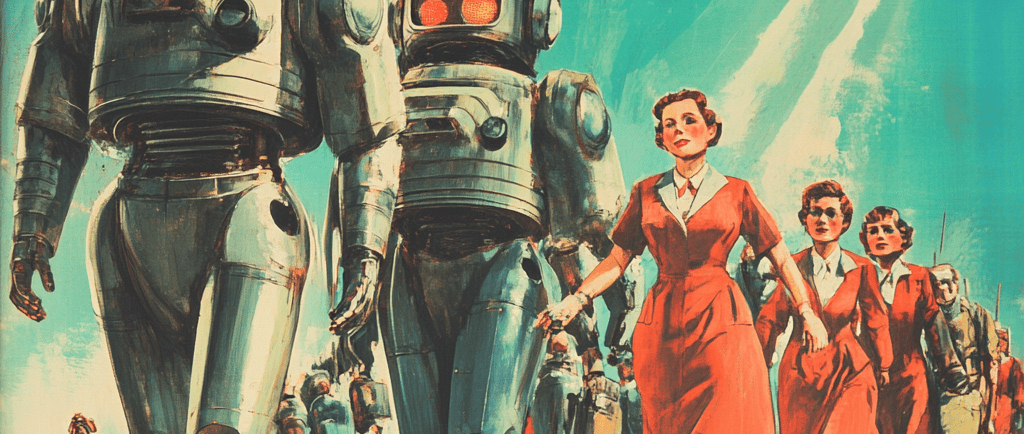Mass Migration in the AI Economy
Displaced workers migrate to AI-driven megacities for economic stability.
TIMELINE


Recently, I found myself watching the sun set over a bustling city—a panorama glowing with possibilities but shadowed by unease. The silhouettes of skyscrapers, punctuated by the relentless hum of activity, hinted at dreams being forged and broken in equal measure. It struck me that these urban landscapes, often celebrated for their potential, are becoming magnets for people seeking refuge from a world of uncertainty created largely by the very technologies that have come to define our era. Here I was, witnessing the heart of an AI-driven megacity, a place where displaced workers from all walks of life flocked, hoping to build a more stable existence.
I think about this a lot, the intersection of human experience and artificial intelligence. It’s fascinating yet terrifying—an embodiment of our deepest aspirations and fears. Every headline about AI displacing workers creates ripples that touch lives, and it’s not simply about job loss; it’s about the communities shattered, the journeys undertaken, and families stretched thin.
In recent years, AI has surged forward, reshaping industries at a dizzying pace. We’ve seen factories and offices automate roles that have long been the bedrock of the economy. Some workers, drained by the cyclical job insecurity and the unyielding pressure to reskill, are opting for a radical change, migrating to sprawling megacities where the promises of tech thrive. But as I watch their stories unfold, I can’t help but wonder—a corporate tech utopia for some becomes a dystopia for others. What are the costs of this migration? Are we losing more than we’re gaining in this new economy?
I’m captivated by the implications. On one hand, cities are burgeoning with innovation, pulsing with energy and creativity, transforming old industries and birthing new ones. But what about the individuals who find themselves on the fringes of this elegant dance? Those who are unable to adapt, those without the means or know-how to plug into the AI machines, what happens to them? I think about the very fabric of our societies—will we create new divides, a chasm between the tech-savvy elite and the isolated, left behind?
Reflecting on my feelings, I can’t help but feel both a spark of optimism and a weight of concern. Hope lies in the ability to innovate, to connect, and to cultivate new communities. I envision a future where displaced individuals reshape their identities and form new collectives, advocating for their rights while demanding fair access to the wonders of AI. Yet, that nagging uncertainty remains—will leaders heed the call, working to create spaces where no one is left behind? Or will we simply watch as cities become theaters of both opportunity and despair?
As I sit with these thoughts, they swirl in my mind, intertwining personal dreams with broader societal narratives. I can’t help but ask myself: In our hurried pursuit of progress, are we building bridges or walls? Will the AI economy foster collaboration and inclusivity, or will it lead to a new era of division? The answer, it seems, lies in our choices today.
